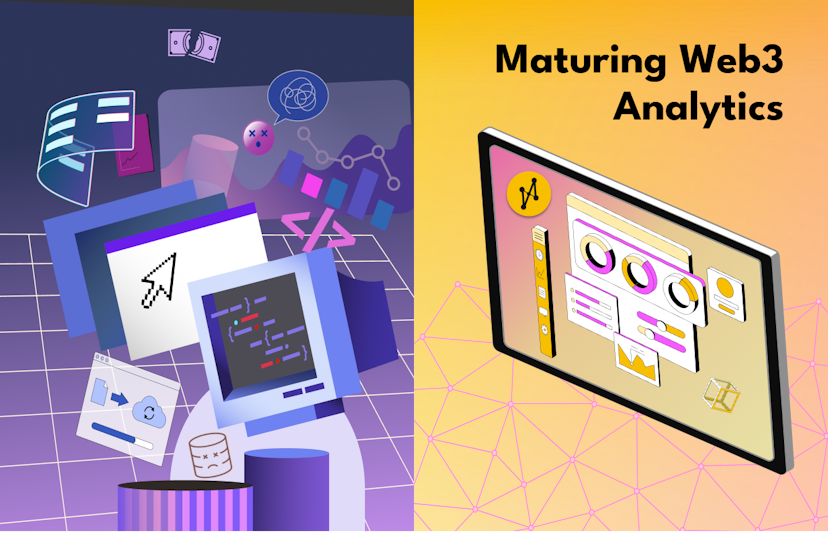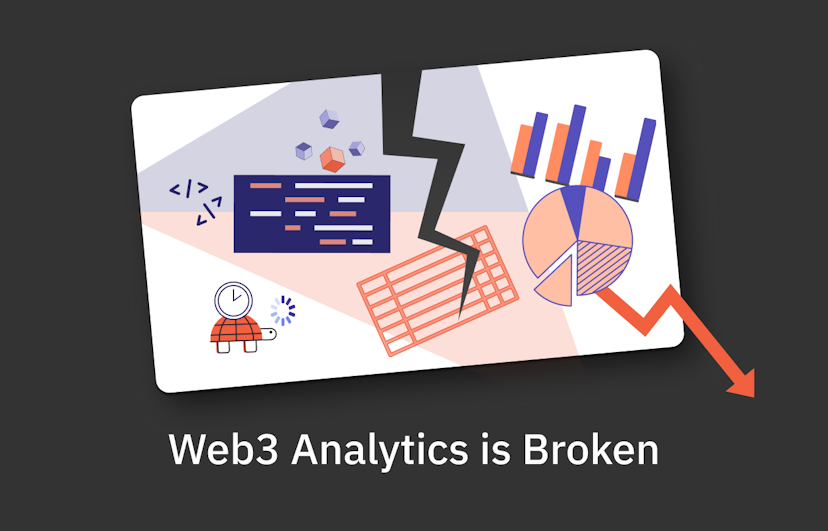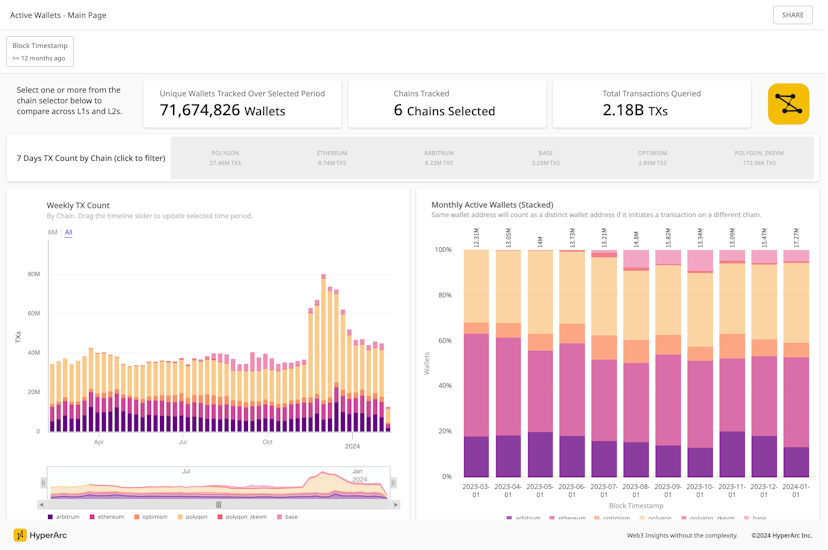Cracking the Consumer Crypto Code
Are decentralized social + L2s the enablers we've been looking for?
(You can find the DataApp this post references here)
It's 2024, and the code for consumer crypto has finally been cracked.
On one side, consumers are engaging with Warpcast and other Farcaster clients in growing numbers. On the other, crypto is increasingly powered by Base and Optimism. Consumer crypto is about the synergy between the two.
Frames 101
It all started when @varunsrin announced the new Farcaster Frames for developers. A frame is a digital structure designed to enhance interactivity within the Farcaster decentralized social network ecosystem. It enables the transformation of static content into dynamic, interactive applications. Examples are polls, live feeds, or galleries within Warpcast or other Farcaster clients. This technology builds upon the OpenGraph (OG) standard, traditionally used for embedding static content, by incorporating interactive elements that engage users directly within the platform.

Frame Use Cases
Exactly nine hours after the Frame feature launch on January 26th, @jj_ranalli created the very first "one-tap” way to mint NFTs inside Warpcast: Frame NFT. Without leaving Warpcast, users were able to tap the mint button and the NFT automatically appeared in their Warpcast-associated EVM address. The whole collection only took about 4.5 hours to sell out, and within three days the floor price reached 0.3 ETH in secondaries on OpenSea.

Click to enlarge
With the instant success of Frame NFT, other creators followed suit. A few hours after Frame NFT hit the market, woj.eth spun up a collection, Supercast NFT, which took only 1.2 hours to sell out, and was almost instantly traded on secondary markets. Notably, "conditioned mint" experiences began to pop up in Warpcast: users having to fulfill some “social quests” such as recasting, liking, and following to qualify to mint NFTs.
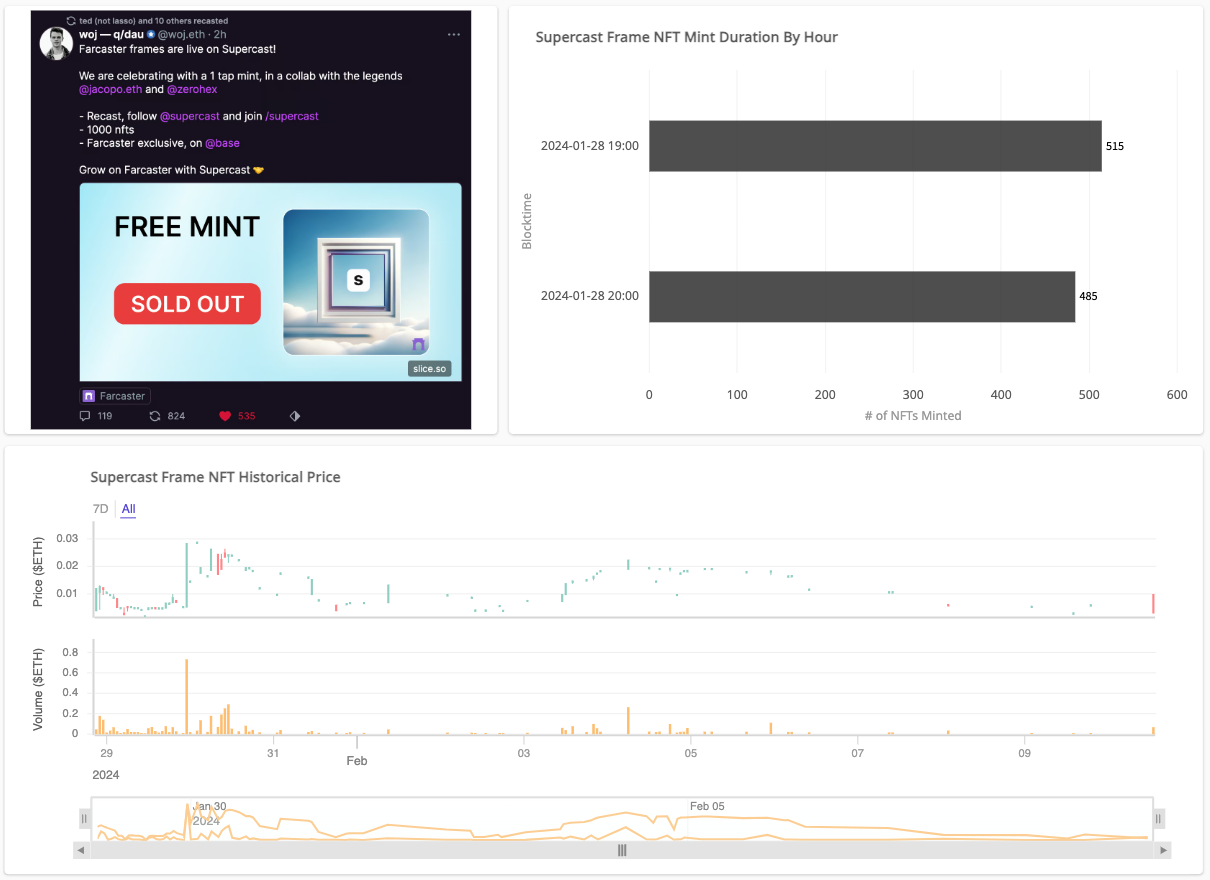
Click to enlarge
Aside from NFT minting, the very first e-commerce frames were created on January 30th - selling Girl Scout cookies from Layla at Troop 1473. Customers can choose the flavors of cookies and add them to a shopping cart. Every order has a fixed US-only shipping cost of $12.99. Once cookie customers filled their shopping cart, they were directed to Coinbase Commerce (powered by their Commerce API) where they could choose a wallet for payment and a US address for shipping.

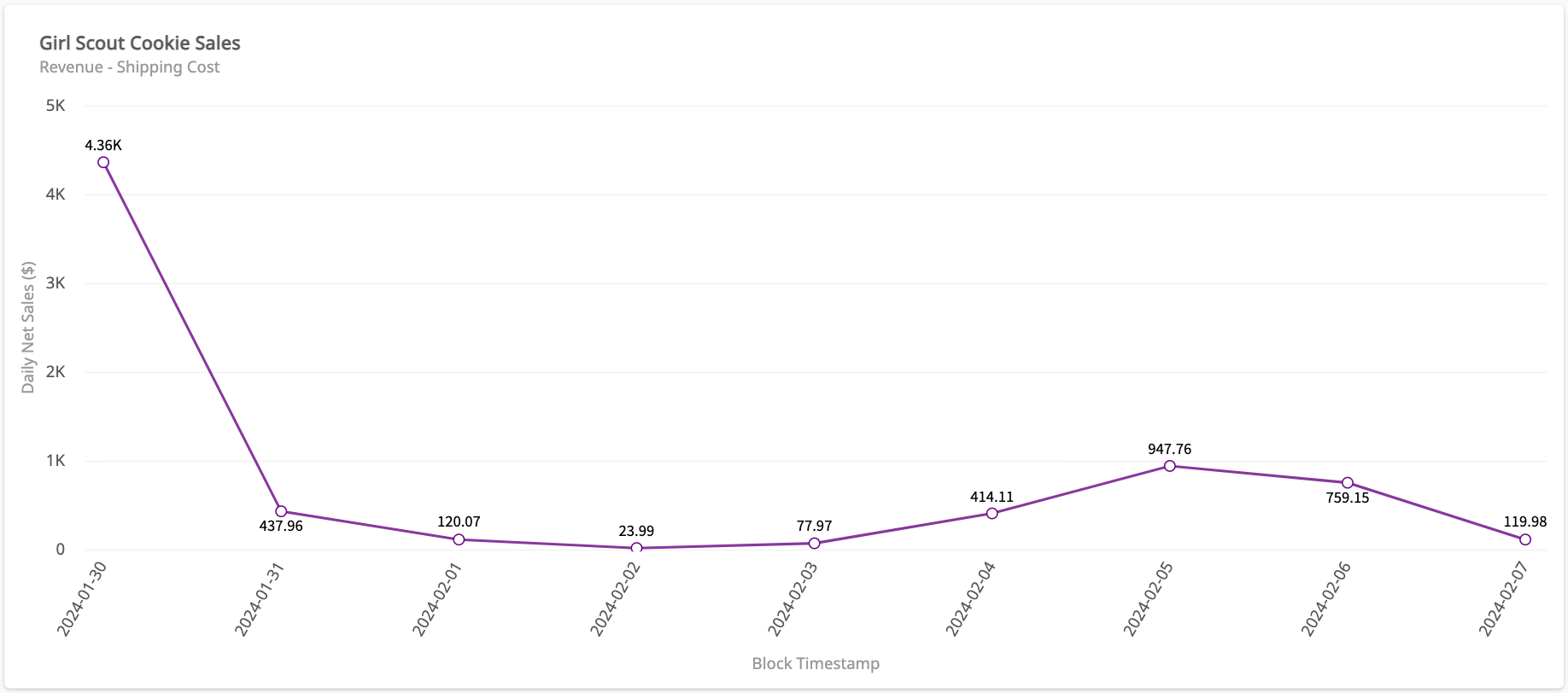
Click to enlarge
On the first day it had almost $4,400 in net sales (revenue less shipping costs). Over a week, it has sold a total of 1210 boxes of Girl Scout Cookies, generating a total of $10,695!
Base and Farcaster Synergy
The crypto community on Farcaster has witnessed significant usage on the Base network, a layer 2 developed by Coinbase. This growth is largely attributed to the low gas fees on Base, marking a pivotal shift in user preferences and transaction patterns.

Click to enlarge

Click to enlarge
We believe that one can now see two distinct eras: the pre-frame era, up to January 25, 2024, and the post-frame era, beginning January 26, 2024. The impact of this shift is most evident in the transaction metrics. Notably, average daily transactions (TXs) related to NFTs have tripled in the post-frame era compared to the preceding period. Similarly, transactions involving ERC20 tokens, including notable ones like $DEGEN and $FRAME, have seen a 78% surge. Overall, the average daily transaction volume has experienced a 37% increase across the board.

Click to enlarge
For the power users of Warpcast, an important shift has been observed in the consumption and revenue generated through in-app WARP points, where 100 WARP equates to 1 USDC. Post-frame era statistics reveal a substantial increase in revenue, jumping from $54K pre-frame to $184K post-frame. This rise is accompanied by a gradual increase in the average USD spent on WARPs since early January, alongside a creeping increase in user count, likely driven by enhanced storage space needs and WARP consumption for NFT minting and other onchain activities with the use of frames.

Click to enlarge
Looking Ahead
In 2007, Marc Andreessen articulated a vision for online platforms that divided them into three distinct levels. Today, we see this vision coming to fruition in the realm of advanced platform development. Level 2 platforms facilitate the augmentation of core functionalities through the use of plug-in APIs for external applications, whereas Level 3 platforms are more integrated, providing a runtime environment that hosts the applications internally.
Frames and Farcaster stand as prime examples of this progressive blueprint. Frames brings Level 2 capabilities to Farcaster, enhancing the platform through seamless API integration. Meanwhile, Farcaster is on the cusp of becoming a full-fledged Level 3 platform, promising an ecosystem where applications not only interact but are intrinsically part of the platform.
The Frames and Farcaster combo signals a shift in the paradigm of decentralized social interaction and consumer behavior. Consumer Crypto is not just a fleeting trend but a transformative movement that will redefine our digital interactions for this cycle and for many to come.
Next Steps
Discover your onchain insights with HypeArc. Sign up for our newsletter at the bottom of the page and/or request a demo of the HyperArc platform!
--
As a reminder, you can find the DataApp this post references, on Farcaster, Frames and Base here. And also take a look at a DataApp that introduces you to how DataApps work and how to navigate them.

